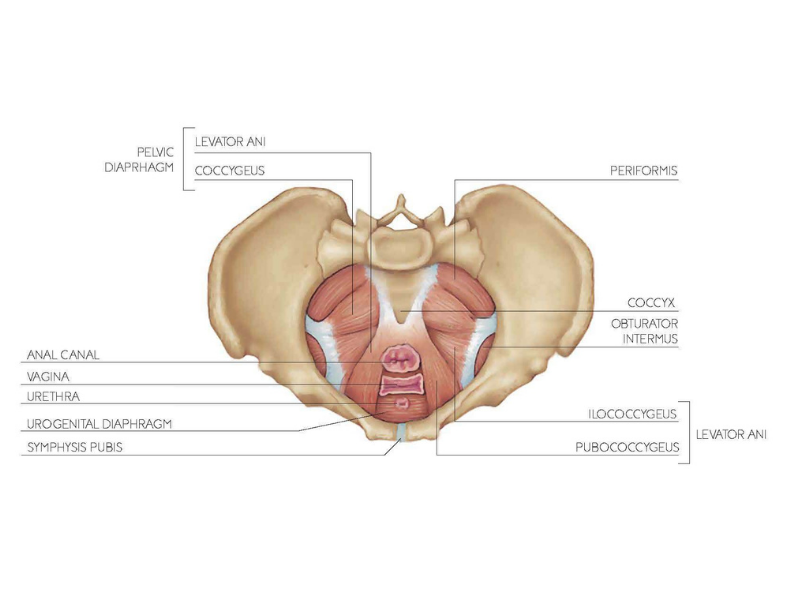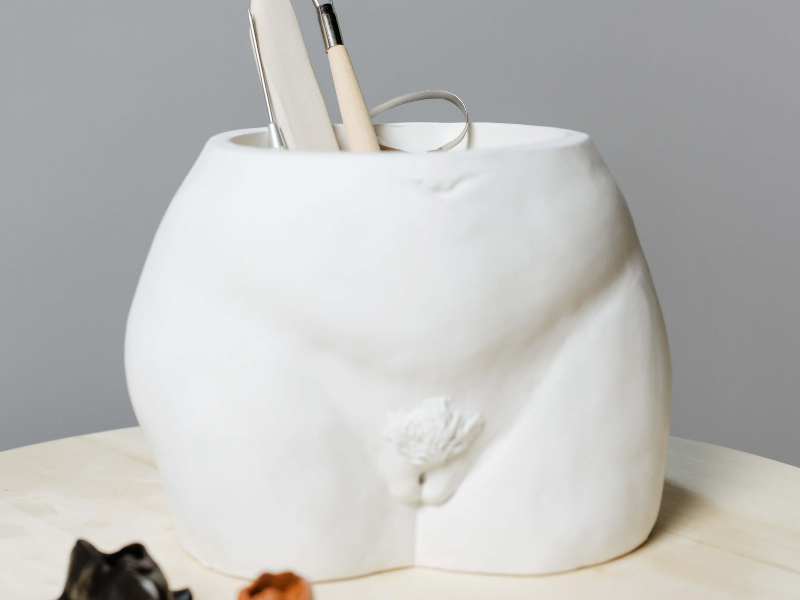It’s often called your ‘core’ for a reason: the pelvic floor supports so much of the core functions of what we do.
Pelvic floor health is critical to our overall wellbeing and quality of life. That’s why we’re committed to helping women understand their pelvic floor, so that they can become better advocates for themselves.
So today, we’re breaking it all down! We’ll briefly explain the pelvic floor, and then explore the anatomy of your pelvic floor, focusing on the different muscles and how they work together. We’ll also explore how these muscles can relate to pelvic floor dysfunction.
Let’s jump in!
Understanding the Pelvic Floor

You’re probably familiar with your pelvis, the lower part of your torso that houses your abdominal organs – namely your bladder, bowels, and reproductive organs.
Your pelvic floor (also called your pelvic diaphragm) comprises all the interrelated muscles that run between your pubic bone and tailbone to support these organs.
Because it supports your bladder and bowels, your pelvic floor muscles control elimination.
They also contribute to sexual sensations, and will support your baby during pregnancy.
As we’ll cover below, the two major muscle groups of the pelvic floor at the levator ani muscles and the coccygeus muscle. Ideally, they work together to keep everything running smoothly.
Pelvic Floor Muscles: The Levator Ani Muscles
The levator ani muscles are a group of deep pelvic floor muscles.1 They form a “complex funnel-shaped structure” comprised of three muscles – the puborectalis, pubococcygeus and iliococcygeus muscles.2
Don’t get too caught up on these technical names, though. The important thing about the levator ani muscles is that they support and raise the pelvic organs, as well as helping maintain sexual functions, defecation, and urination.
Weak levator ani muscles are one of the major causes of pelvic organ prolapse, in which one of the pelvic organs drops into or out of the vagina or anus. Learn more about pelvic organ prolapse here. 3
Pelvic Floor Muscles: The Coccygeus Muscle
The coccygeus muscle is a sheet of muscles and fibrous tissue that works with the levator ani muscles to support the pelvic organs. It forms the lowest part of the posterior wall of the pelvis. Note that sometimes, this muscle is considered to be part of the levator ani group of muscles.
If you experiencing incontinence, it can be related to weak levator ani muscles and/or coccygeus muscle. You may find the following resources helpful:
Can You Strengthen Pelvic Floor Muscles?
When women understand that things like bladder control and elimination are maintained by muscles, their next question is often, ‘can I strengthen these muscles?’ Yes, you can! The pelvic floor muscles are just like any other muscles in your body – your lifestyle and level of activity can play a big role in how strong or weak they are.
There are two main ways to strengthen your pelvic floor muscles. Many women benefit from Kegels, which are exercises specifically designed to strengthen the pelvic floor.
Women who are experiencing pelvic floor dysfunction may also want to consider working with a pelvic floor physical therapist, who can help recondition the pelvic floor muscles by strengthening and stretching them to alleviate pain and dysfunction.
So whether or not you remember all the fancy medical terms for your pelvic floor muscles, we hope you’re now inspired to take better care of your pelvic health. There’s no reason to suffer in silence! Use our Physican Finder to find a pelvic health specialist in your area.
















